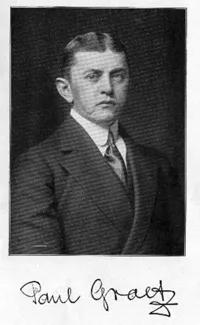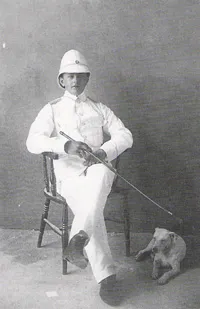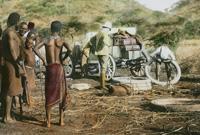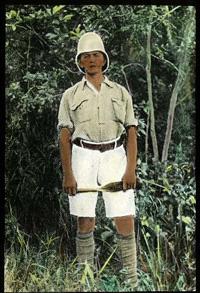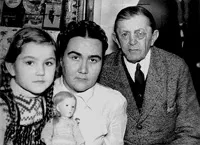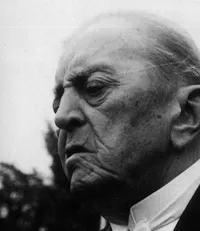Welcome to Paul Graetz
The German Indiana Jones
In the past many great deeds have been accomplished through bravery and perseverance. One of them was the first transit of southern Africa by car accomplished by the German pioneer.
Biography Paul Graetz (pdf - German)
Abridged Biography
Youth in Africa
The baroquan bon vivieur Paul Graetz grew up in Dresden at his uncles’ after his father’s timely death. Technically inclined and a high achiever he enrolled with the royal army. Due to his excellent achievements as tutor his foreign deployment was rejected during the Boxer Rebellion in 1900.
In 1901 he already achieved the Knight’s cross II degree for his bravery during peace as lieutenant and was rewarded with a transfer at his own request to the then German colony of German East Africa. Here he kept himself busy with road construction, a task that was terminated prematurely due to lack of funds.
During the big Maji Maji rebellion no clashes took place in his jurisdiction. He excersised his duty considerately and outstandingly clear sighted. Was it dangerous to travel into the depths of Africa? „The violations of the human rights of the indigenous people frequently lead to catastrophe, whether the European took away possessions or took advantage of the nigger’s wife or as a result of misunderstandings as he lacked the knowledge of the language and thus misconceived situations, leaving them feeling threatened and drawing their firearms.”
„A proof to how right it is not to carry fire arms! Another lesson: Always keep calm and do “Schauri” i.e. negotiate.”
Crossing Africa by automobile
Back home he immediately stared planning his Africa transit at his own account Using a pseudonym he started an invitation for tender for an Africa transit automobile with 35cm clearance – the first off-road vehicle worldwide. The production plant Gaggenau, which specialised in producing specialised vehicles received the tender.
On March 12th 1907 a Berlin newspaper announced: „ A German officer intends to cross Africa with an automobile. He does not seem to know that in the hinterland of the black continent there is neither fuel nor oil nor tyres to purchase. The plan of this gentleman equals the intention of travelling to the moon......“
To proof that his ideas weren’t merely follies he quit the army. Thus he was a civilian responsible for his own actions.
In Gaggenau he helped putting together the vehicle to be more independent from the chauffeur.
The vehicle was shipped to Dar-Es-Salaam in today’s Tanzania where he started his venture on the 10th August 1907 at the post office. After only six days of expedition all 4 cylinders blew during a water crossing. It took three months for the spare parts and a new chauffeur to arrive, as the first one had left already.
With the help of ox-wagons transports a fuel station network and 22 spare part storages – some of them camouflaged as graves to avoid theft – were prepared. Finally, after burst cylinders, torn off rear axles, a love sick chauffer fleeing to his lady lion tamer, a depleted budget, fever dreams, evaporated fuel, collapsed bridges and often close to dying of thirst Paul Graetz reached his destination Swakopmund after 630 days on the 01.05.1909. The Berlin newspaper received a post card from Swakopmund:
„Have arrived on the moon, Paul Graetz“.
Back in Germany he was received as a star by a new society
He gave presentations underlined with colourful slides in the big halls of Europe and impacted t e Berlin nightlife.
As a strong-willed character, who brought the ventures he started to a success, the sponsors queued for his second expedition: Dr. Oetker, Knorr, Löwenbräu, Bahlsen...
Crossing Africa by motor boat
In 1911 he began his transition of the African continent on water with the expedition boat "Sarotti". The boat was dragged for 240 kilometers on land, 45 minutes of film footage was shot. During a buffalo fight the French camera man Octave Fieres dies and Graetz is heavily injured. His jaw strapped to his head with the help of a belt he continues his journey through the legendary area of the Bangwelu Lake until the Mombatuta Falls put an end to the expedition just before reaching the Congo River.
Back in Germany
In Germany he held further presentations and showed the expedition film – the first shoots from Central Africa. With a second boat he then managed to transit Africa by crossing the Congo River.
His slide-show presentations allowed him to lead a secure life. He resided in exclusive hotels and had a permanent suite in the Berlin Hotel Adlon.
As of 1914 he started preparing a German – English – Dutch aeronautical land Survey expedition to Papua New Guinea. The outbreak of the 1 World War prevented the execution of the expedition. In 1915 he was commando officer of the military flight school and the Fokker aircraft plant in Schwerin until he reached the maximum age for military pilots. Graetz then immediatly planned for post-war times and founded the „Deusche Aero-Lloyd“ a predecessor company of the German Lufthansa.
As lobbyist of the German industry he managed establish trading bonds, founded the first glass producing plant in Indonesia and sold agricultural machinery.
He never planned senseless expeditions, but always had specific economic interests and their practical implementation on his mind. Today he would most probably work for SAFRI.
Immunised by his loyalty to the emperor, Graetz never wanted to become a party member in the Third Reich and thus had to spend a few days in prison. Thanks to his age further imprisonment did not take place.
In 1941 at the magistrate of Potsdam-Babelsberg at the age of 66 he married his third wife, the 25 year old Wally Pods. About a year later his daughter Uta was born. The family survived the bomb attack on Dresden.
As Graetz also refrained from joining a party in the Soviet occupation zone he did not receive the permission to present slide shows. With the help of the English the family had to flee Dresden in 1949. Due to his good knowledge of the English language Graetz stood under the suspicion of spying on the uranium mine in Wismut.
In 1950 – nearly blind – he prepared a third Africa transition from Cape Town to Cairo with a Borgward vehicle and Dehtleffs trailor. The journey was aimed at enabling comparisons in all scientific and economic aspects between today and „then“. This time in a standard car and under normal touristic conditions. On departure of Venice the driver Wally Graetz injured herself and the expedition did not take place.
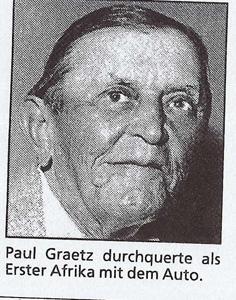
Paul Graetz spent his last years clear minded in his house „Afrika-ruh“ (Africa-rest) in Travemünde. His tombstone reads:
Paul Graetz africanus
Carpe Diem
25.07.1875 - 16.02.1968



